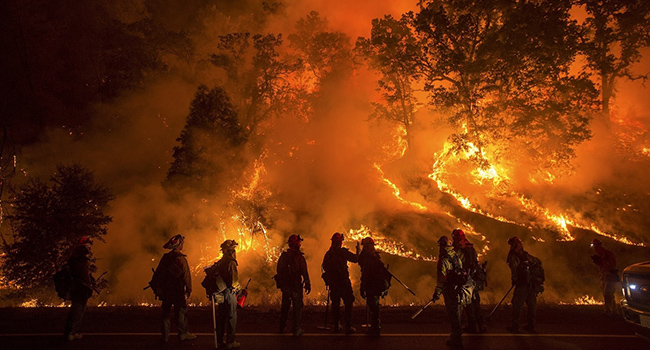 California is on fire. Although most of the fire-affected territory has nothing to do with agriculture, the smoke is so intense that it could damage many crops.
California is on fire. Although most of the fire-affected territory has nothing to do with agriculture, the smoke is so intense that it could damage many crops.
And as fall approaches, the California fires could affect Canada’s food supply for the coming months.
Like the labour issues affecting Canadian farmers this summer, this is certainly not good news.
Each year, Canada imports about $3.1 billion in food from California, according to the California Department of Food and Agriculture.
Those products (other than wine), are led by lettuce, almonds, strawberries, raisins, oranges, cauliflower, grapes, pistachios, onions, spinach and carrots. In the fall and winter months, the United States – especially California – are key in replenishing Canada’s grocery baskets.
Given our northern climate, we need import options to keep the cost of food reasonable.
With a relatively strong Canadian dollar, there was nothing too much to worry about. COVID-19 made things a little more difficult over the last six months, of course, but our food security has never really been compromised.
Obviously, Mother Nature now has other plans.
In California, major fires burn almost every year. But as in many ways, 2020 is different.
And California’s wildfire season usually extends from July to November, when hot, dry winds are most frequent. The wildfire season usually doesn’t end until the first major rainstorm of the winter arrives.
This year, nearly 8,000 fires have already burned more than three million acres, a record for California. At one point, smoke covered almost half of the state’s territory.
Climate change has dramatically increased the risk of forest fires in California and elsewhere. Alberta had a hellish summer barely two years ago. Quebec has experienced periods of significant drought in recent years.
There have also been major floods in Manitoba and Quebec. And the list of weather anomalies goes on.
The fires, coupled with pandemic-related complexities, have made things more complicated this fall. A third of the vegetables produced in the U.S. come from California, and more than half the fruits and nuts from the U.S. are produced in the state.
Behind the European Union, Canada is California’s second largest customer for food. Our influence is real. But in the context of a pandemic, anything can happen. Some American sellers might prioritize the domestic market to the detriment of Canadian importers.
If the harvest for certain foodstuffs in California is compromised – lettuce, strawberries and cauliflower, for example – our importers will have no option but to buy elsewhere. With the loonie hovering around US$0.76, we should be fine, but the California situation complicates things for our importers.
We import during winter months because we have few other options. The pandemic and climate change are stark reminders of how important it is to provide our food economy with sustainable options going forward.
Producing fruits and vegetables here is one thing, but we need a strong sectoral approach. That will include consumers actively participating in the growth of the sector. And the products must be good, environmentally friendly and, above all, inexpensive.
Several types of controlled agriculture plans can be integrated into an ambitious strategy to serve Canada’s economy, in urban and rural settings. Traditional greenhouses, rooftop greenhouses or integrated agricultural spaces such as vertically-stacked hydroponic crops are some of the scenarios.
In many parts of the country, energy is clean and space is cheap. Many regions can dream of feeding citizens affordable products while developing other markets.
Recalled produce from California this summer, such as peaches and onions, could also motivate us to rethink our production models for winter months.
Dr. Sylvain Charlebois is senior director of the agri-food analytics lab and a professor in food distribution and policy at Dalhousie University.
Sylvain is a Troy Media Thought Leader. Why aren’t you?
The views, opinions and positions expressed by columnists and contributors are the author’s alone. They do not inherently or expressly reflect the views, opinions and/or positions of our publication.

